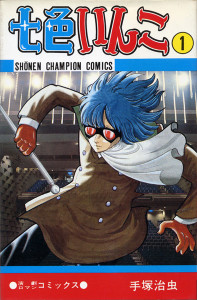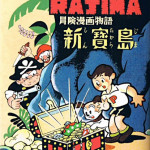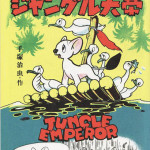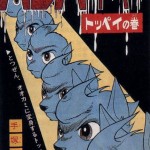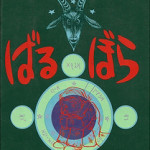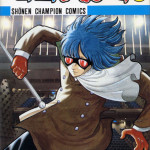Tezuka’s Manga (1980-89)
Still going strong
Although Tezuka spent the last decade of his life primarily focused on his award-winning work in experimental animation, there are still several important manga series of note. Having shed most of the darkness that permeated his work in the 1970s, his manga work in the 1980s is much more balanced – brighter, but not sliding to either extreme pessimism nor optimism.
Early in the decade, he turned his life-long love of the theatre into an adventure series featuring a gentleman thief, Rainbow Parakeet (1981-82), with each chapter being modeled after a play or some other piece of literature. Despite it’s criminal aspects, the series remains light-hearted and just plain fun. This new-found balance is also evident in Midnight (1986-87), a series modeled, to some degree, on his 1970s hit, Black Jack (1973-83). While it is conceivable that the adventures of an unlicensed night-time taxi driver could have been quite dark had Tezuka tackled the series in the 1970s, as a series of the 1980s it remains relatively light-hearted as well.
The 1980s also saw Tezuka move away from the straight social commentary pieces and focus instead on more realistic historical drama. The first of these, A Tree in the Sun (1981-86) draws on Osamu Tezuka’s own ancestors to tell the tale of Dr. Ryoan, one of the first western-educated medical doctors. Unlike the earlier Black Jack (1973-83), A Tree in the Sun (1981-86) focuses on a more realistic portrayal of the infancy of medical knowledge and sets it against the backdrop of the opening of Japan to the west. The second major historical drama, and one of Tezuka’s last major works, Message to Adolf (1983-85) tells the story of three individuals named “Adolf” – a Jewish boy living in Japan, a half-Japanese/half-German boy, and the infamous leader of Nazi Germany. Not so much a commentary as an exploration of the price of war, specifically Word War II and it’s aftermath.
Finally, it seems somewhat fitting that Tezuka’s final manga series, the unfinished Neo Faust (1988) sees Tezuka return, almost full circle, by revisiting a manga from the very beginnings of his career, Faust (1950) – to the very end, blurring the line between classic literature and the manga form.
| Year(s) | English Title | Japanese Title |
| 1980 | Yamataro Comes Back! | 山太郎かえる |
| 1980-84 | Unico [First Grader] | ユニコ |
| 1980 | Beggar Princess Lumpenela | こじき姫ルンペネラ |
| 1980 | Phoenix [“Life”] | 火の鳥 |
| 1981 | The Guardian Spirit | いないいないばあ |
| 1981 | Phoenix [“Strange Beings”] | 火の鳥 |
| 1981 | Good-bye, Mali | さらばアーリイ |
| 1981-82 | Rainbow Parakeet | 七色いんこ |
| 1981-86 | A Tree in the Sun [a.k.a. Tezuka’s Ancestor, Dr. Ryoan] | 陽だまりの樹 |
| 1981 | Invitation to the Grotesque | グロテスクへの招待 |
| 1982-83 | Spaceship Ringel Rock | ふたりでリンゲル・ロックを |
| 1982 | Dari the Robot Nurse | ダリとの再会 |
| 1982 | Volcanic Eruption | 山の彼方の空紅く |
| 1982-83 | Prime Rose | プライム・ローズ |
| 1982 | Suspicion | サスピション |
| 1983 | A Boy Named Paradise | はなたれ浄土 |
| 1983-85 | Message to Adolf | アドルフに告ぐ |
| 1984 | Norakuro Modoki | のらくろもどき |
| 1984 | The Fang People | 牙人 |
| 1985 | The Customer is a Devil | お客さまは悪魔です |
| 1985 | Say Hello to Bookila! | ブッキラによろしく! |
| 1985 | Yamanashi | やまなし |
| 1985 | Destination: 1985 | 1985への出発 |
| 1985 | Farewell, Night | 夜よさよならアディオスノーチェス |
| 1985 | One-Panel Manga | 1コマ漫画 |
| 1985-86 | Duke Goblin | ゴブリン公爵 |
| 1986-88 | Phoenix [“Sun”] | 火の鳥 |
| 1986-87 | Midnight | ミッドナイト |
| 1986-87 | Atom Cat | アトムキャット |
| 1987 | New Ryosaishii | 新・聊斎志異 |
| 1987-89 | Ludwig B | ルードウィヒ・B |
| 1987-89 | Gringo | グリンゴ |
| 1987-88 | Healthy Family Series | 健康家族シリーズ |
| 1988 | Neo Faust | ネオ・ファウスト |

